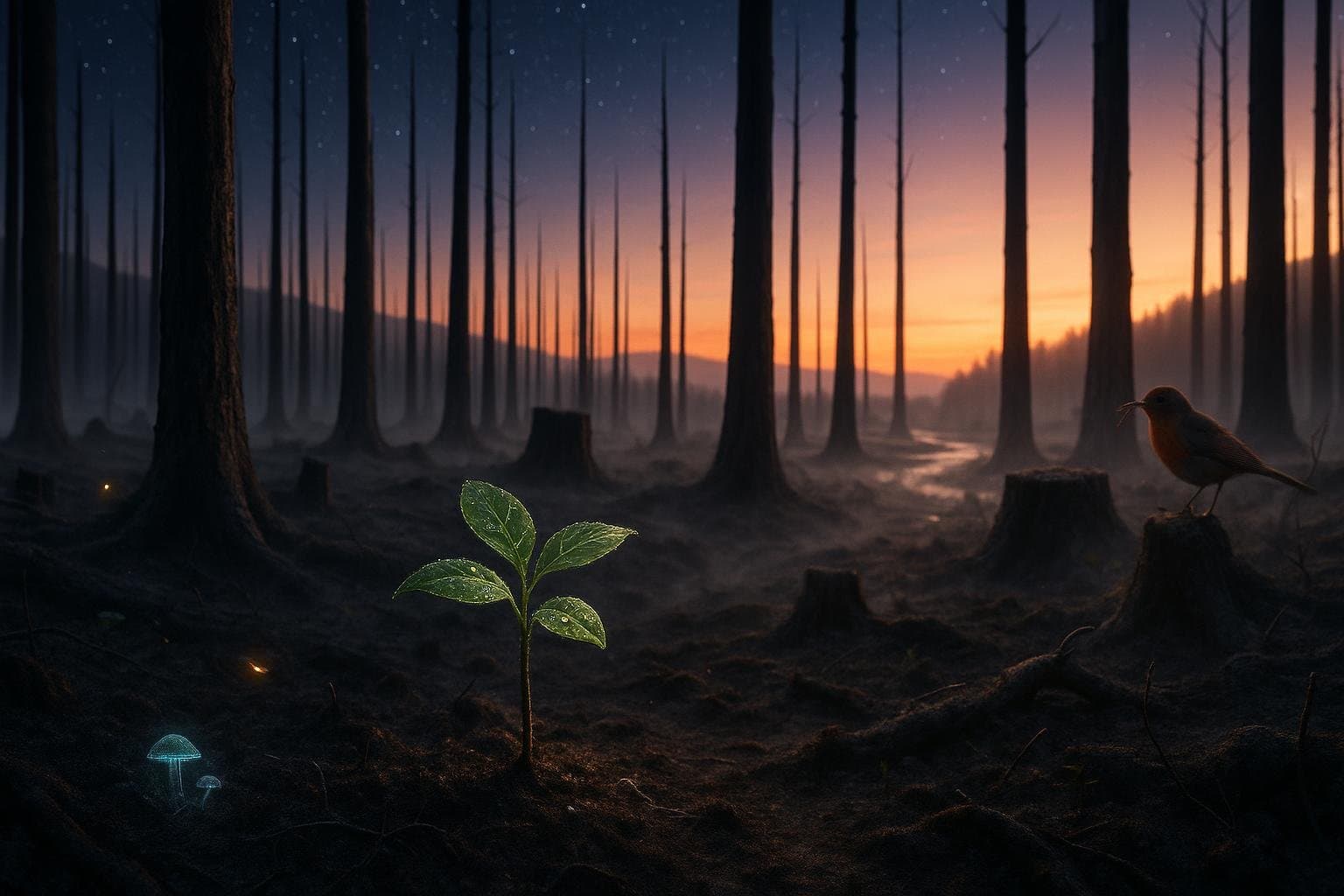When the Future’s Darkness Becomes Possibility

The future is dark, which is the best thing the future can be. — Toni Morrison
Uncertainty as Freedom
To begin, calling the future “dark” reframes uncertainty as freedom rather than doom. Darkness here is not a moral verdict but a description of what is not yet illuminated—what has not hardened into inevitability. Because nothing is decided, much remains possible. This stance resonates with John Keats’s notion of “negative capability” (1817), the capacity to dwell in mysteries without anxious grasping, and with Rainer Maria Rilke’s advice to “live the questions” in Letters to a Young Poet (1903). In both cases, not-knowing becomes a space for transformation. Thus, the future’s best quality is its openness: it resists prediction, and in doing so, resists foreclosure. By accepting the night, we recover the agency to move, adjust, and invent, rather than merely submitting to forecasts pretending to be fate.
Morrison’s Generative Use of Darkness
Building on this, Toni Morrison repeatedly turned “darkness” into a generative lens. In Playing in the Dark: Whiteness and the Literary Imagination (1992), she shows how Blackness—figured as darkness—has been a crucible for American literary creativity, not a void. Similarly, Beloved (1987) insists that history’s shadowed rooms contain voices that, once heard, remake what counts as truth. The novel’s hauntedness refuses the false comfort of bright, flattening certainty; instead, it invites readers to linger until new vision forms. Even in Sula (1973), moral ambiguity is not a failure of light but a deeper honesty about human motives and costs. Through such works, Morrison treats darkness as fertile ground: a place where the unsayable can be spoken and the unimagined can take shape—exactly the sort of ground from which a better future might grow.
Hope as Discipline, Not Prediction
From literature to civic life, the dark future invites hope practiced as a discipline rather than optimism as a forecast. Rebecca Solnit’s Hope in the Dark (2004) argues that uncertainty protects possibility; you continue to work because outcomes are undecided. Organizer Mariame Kaba’s phrase “hope is a discipline” (often cited in 2020) sharpens this into a daily ethic: prepare, collaborate, and persist without guarantees. Under this view, hope is not a sunny mood but a set of repeatable actions—listening, building, revising—that keep new paths available. The “best” future, then, is one we refuse to pre-close with either despair or naive assurance. By treating unlit horizons as a practice field, communities grow capacity, so that when openings appear, they are ready to move through them.
Acting Bravely Without Guarantees
Consequently, many of history’s breakthroughs arose precisely because people acted before outcomes were knowable. The Montgomery bus boycott (1955–56) began with uncertainty yet reconfigured a city’s moral map. Freedom Summer (1964) risked lives to register voters, betting on seeds whose harvest would be delayed. Decades later, ACT UP’s direct action pressured institutions during the AIDS crisis, accelerating research and access when timelines were murky. In each case, darkness did not paralyze; it clarified the stakes and multiplied tactics. Theodore Parker’s line—popularized by Martin Luther King Jr.—that “the arc of the moral universe is long, but it bends toward justice” (1853/1965) points less to inevitability than to labor: hands must do the bending. Acting without guarantees transforms uncertainty from threat into leverage.
Creative Work in Unlit Rooms
Likewise, the creative process thrives on not-knowing. Morrison often wrote in the early hours, when the world was quiet and undefined—time she described as essential for hearing the work before it calcified into answers. Her counsel, “If there’s a book that you want to read, but it hasn’t been written yet, then you must write it,” comes from this posture of invention (see interviews collected in Conversations with Toni Morrison, ed. Denard, 2008). Artists, scientists, and entrepreneurs begin with questions, sketches, and prototypes that accept the dark as a working condition. Rather than demand perfect foresight, they iterate, allowing forms to emerge. Thus the darkness of the future mirrors the studio or lab: a space where missteps inform the next draft, and ambiguity shelters fragile beginnings.
Humility, Design, and the Unknown
Ultimately, embracing darkness counsels humility in planning. High-modernist overconfidence often failed precisely because it pretended to know too much too soon; James C. Scott’s Seeing Like a State (1998) catalogs such disasters. By contrast, adaptive approaches—pilot projects, community co-design, and incremental policy—treat uncertainty as a design parameter. This does not mean drifting; it means setting a compass and updating the map as terrain reveals itself. In ethical terms, admitting you cannot see everything makes space for those who can—local knowledge, marginalized voices, and emergent data. The future is best when dark because it keeps us honest and alert, asking, testing, listening. As our eyes adjust, we discern new constellations—and with them, new routes through the night.